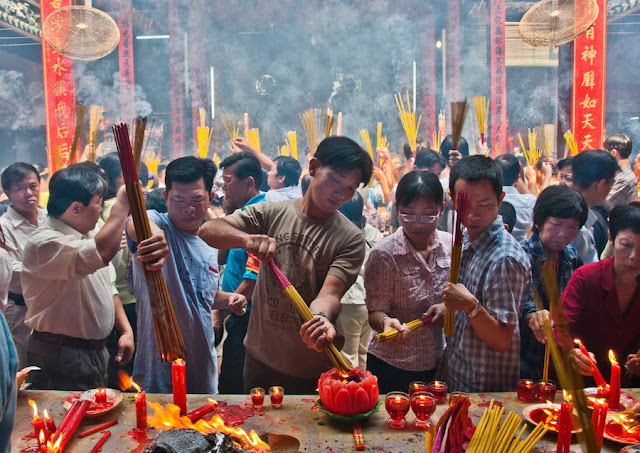Friday, 2 December 2016
Tet Vietnam
Last week we share Vietnam's geography with you. Today, we are talking about Tet - aka the lunar new year in Vietnam.
Vietnam inherited the lunar calendar from China, with its twelve-year cycle of years named after various animals, and continues to follow it. The lunar New Year and the season of Spring start with the Tet Festival, which usually falls in late January or early February. Tet is a time when everyone wants to be at home with the family. The house will have been scrubbed clean and decorated; new clothing will be worn; presents will be exchanged.
Before Tet there will be a rush to buy clothing, vast quantities of food, candles, and flowers. Practically every family forgets thrift and buys a large quantity of food for the Tet holidays, not only to eat but to place on the family altar for the ancestors. City streets are a riot of color with flowers and decorations on each shop and sidewalk stall. Among the items for sale are the traditional Tet trees—pink peach blossoms in the north, yellow apricot flowers in the south, and beautifully trimmed kumquat trees everywhere.
All Vietnamese want to pay off their debts, as it is bad luck to enter the New Year owing money. In addition, Tet is a time for correcting all faults, forgetting past mistakes, pardoning the sins of others, and ensuring no further enmity, grudges, envy, or malice exist. It was for this reason that the 1968 Tet Offensive launched by the Viet Cong throughout South Vietnam caught the Saigon regime and the United States by such great surprise.
A week before Tet, the Tao Quan (a trinity of spirits collectively known as the kitchen god, or the god of the hearth) ascends to heaven to report to the Jade Emperor on the past year’s events. To ensure a good report, the house must be thoroughly cleaned and the Tao Quan plied with food and gifts. All the hustle and bustle of preparation comes to an abrupt halt, however, at noon the day before Tet, and everyone heads for home, no matter how far away it might be (even at the other end of the country). The first activity on that afternoon should be a special ceremony inviting deceased relatives to share in the family celebrations, and they are invited to come back for a few days and share the festivities with the living members of the family.
Huge crowds converge on city centers to sing and dance, completely blocking the streets. The climax comes at the stroke of midnight, when the Tao Quan returns to earth. In the cities, the sky is lit up by huge fireworks displays (a substitute for firecrackers, which were banned in 1995 after several deaths). People rush to gather green leaves for luck as the crescendo of noise reaches a climax.
The next morning, the family rises early and dresses in new clothes. Everyone offers each other New Year wishes, and the children are given lucky red envelopes containing money. Tradition attaches great importance to the first visitor from outside the home on the New Year. He or she is believed to influence the happiness or well-being of the family during the rest of the year. On succeeding days, visits are paid to the homes of relatives and friends.
On the fourth day of Tet, the Vietnamese believe that their ancestors return to their heavenly abode, so life begins to regain its normalcy. People visit graves on this day, acting as an escort for their departing ancestors.
Some things are considered to be very bad luck if done at Tet. One should never clean the house, insult others, misbehave, swear, or show any anger or grief. Breaking any dishes is also considered a bad omen.
Subscribe to:
Post Comments (Atom)






No comments:
Post a Comment